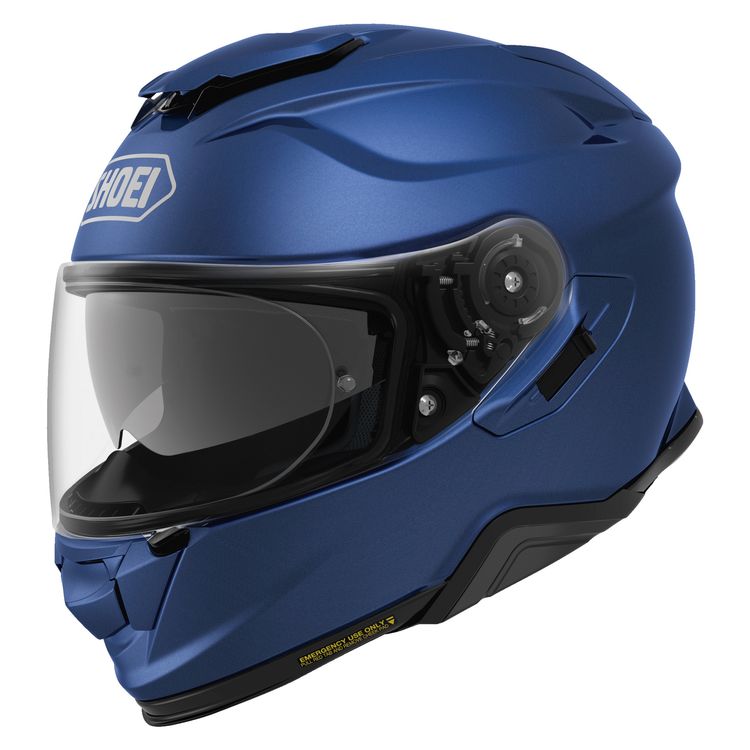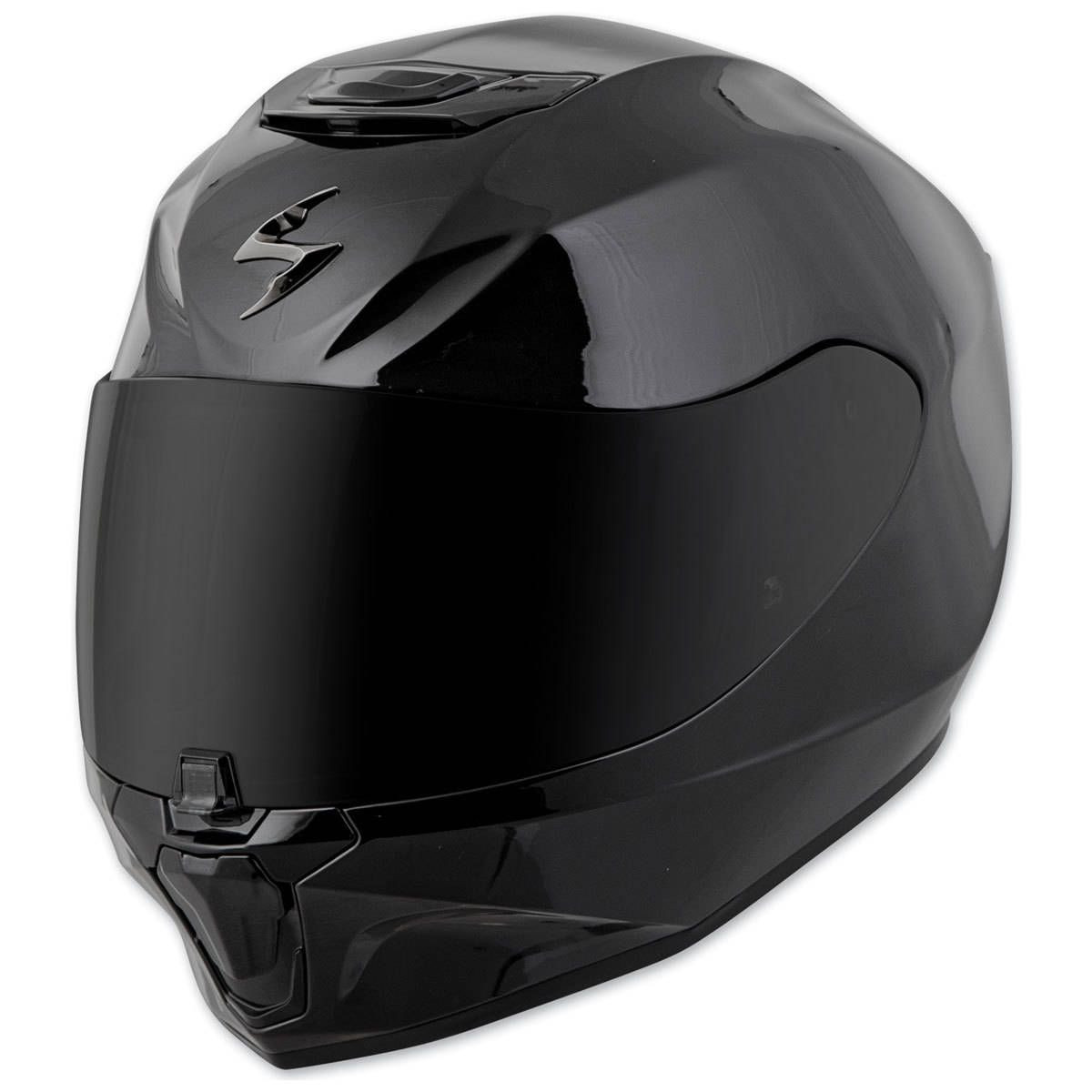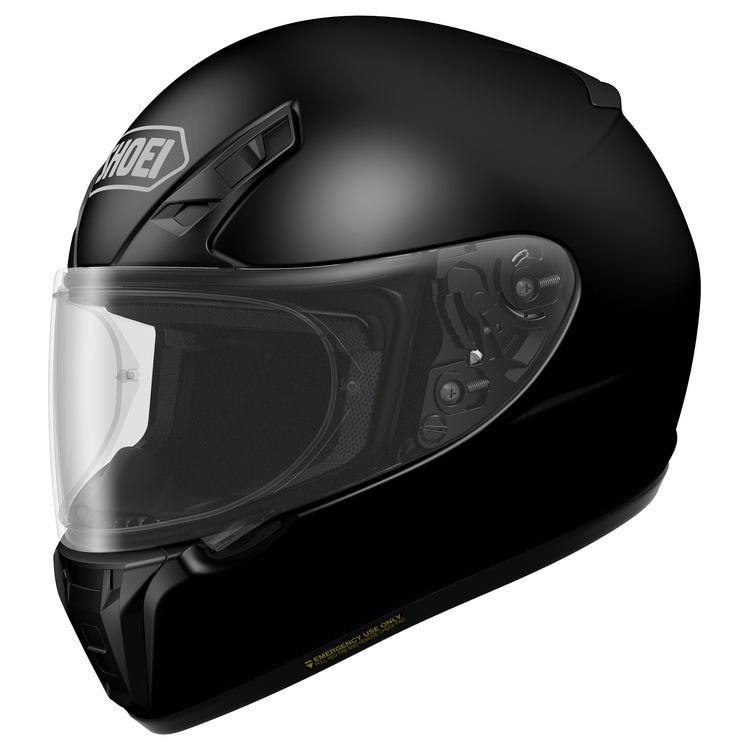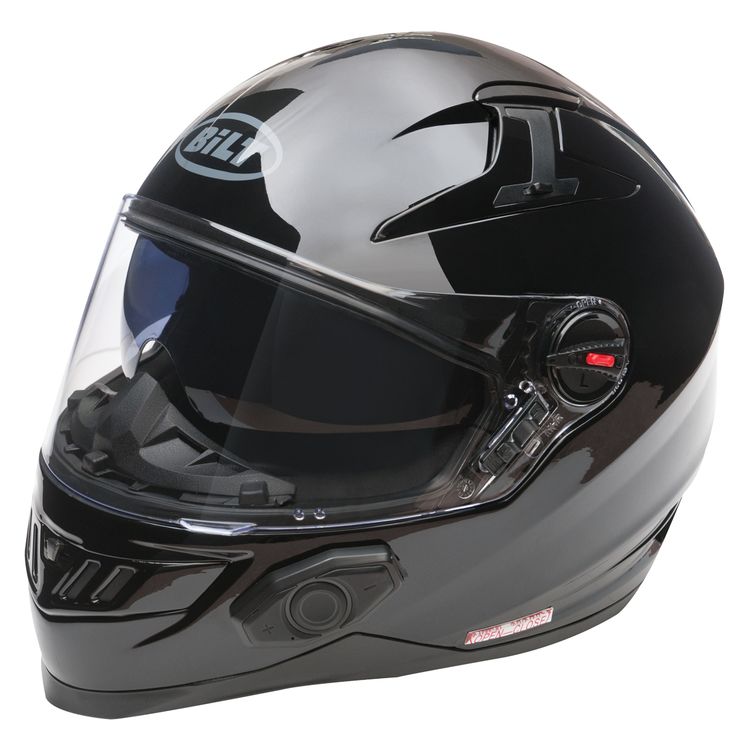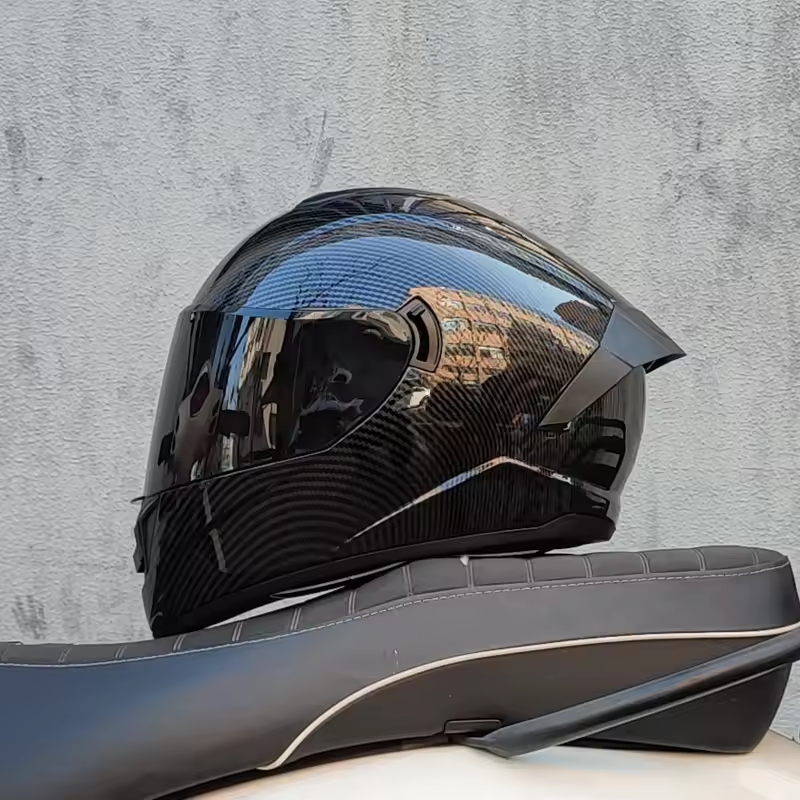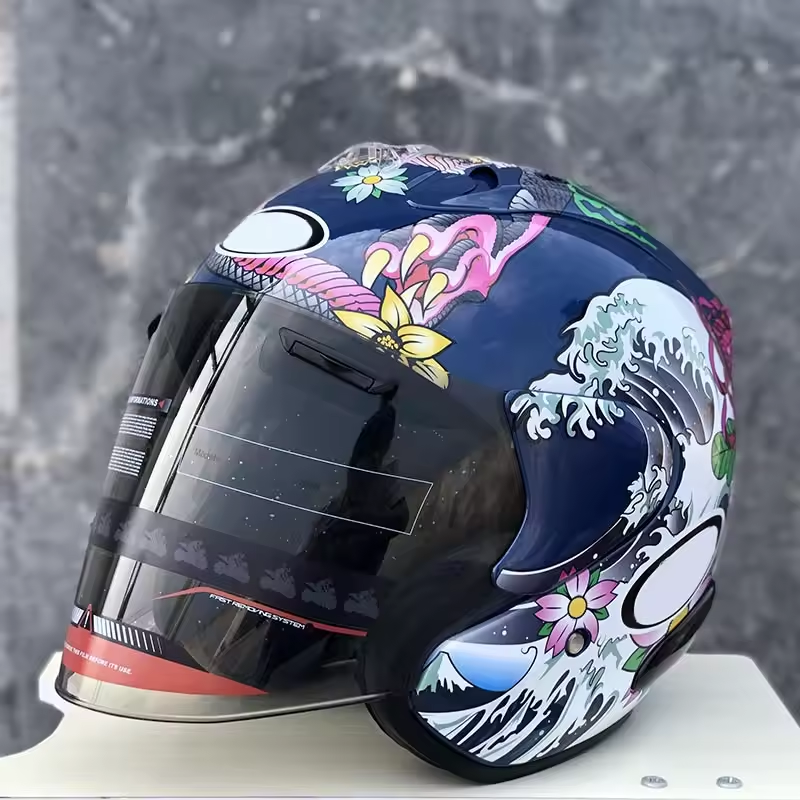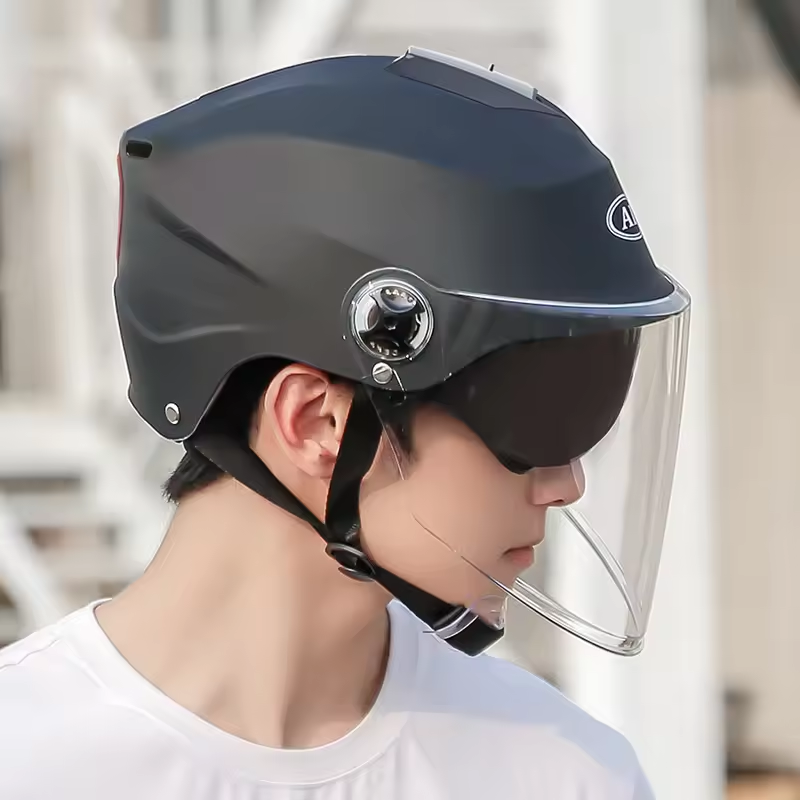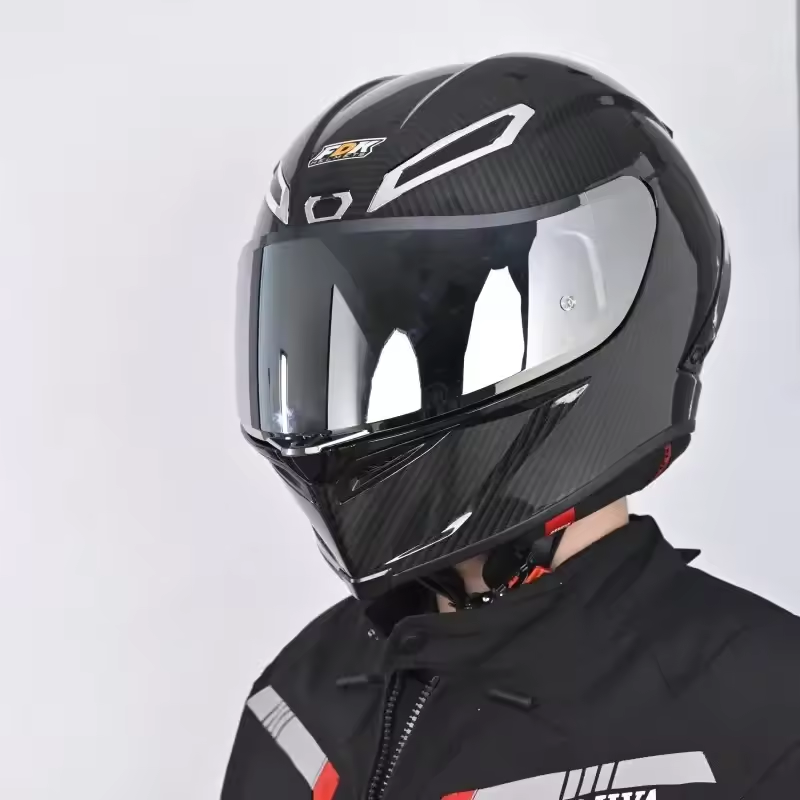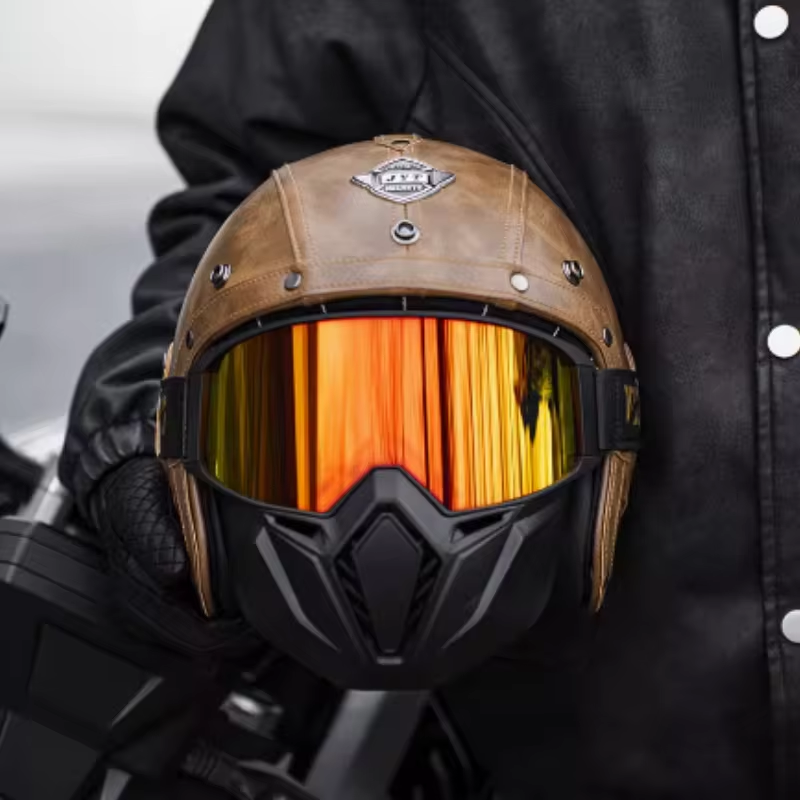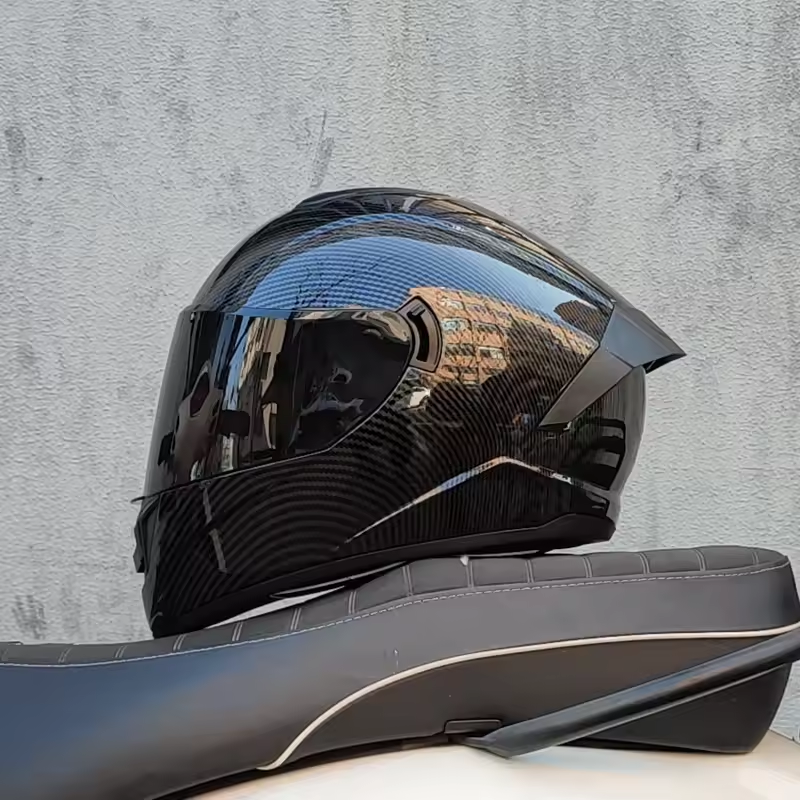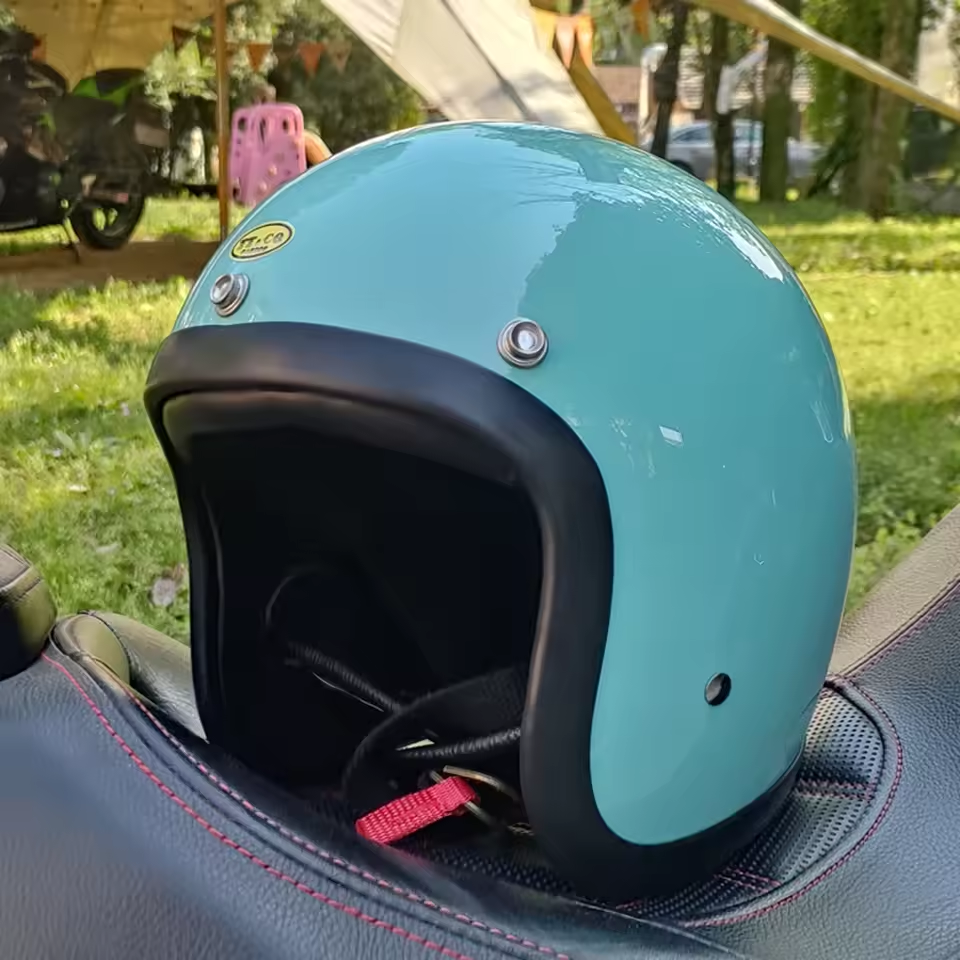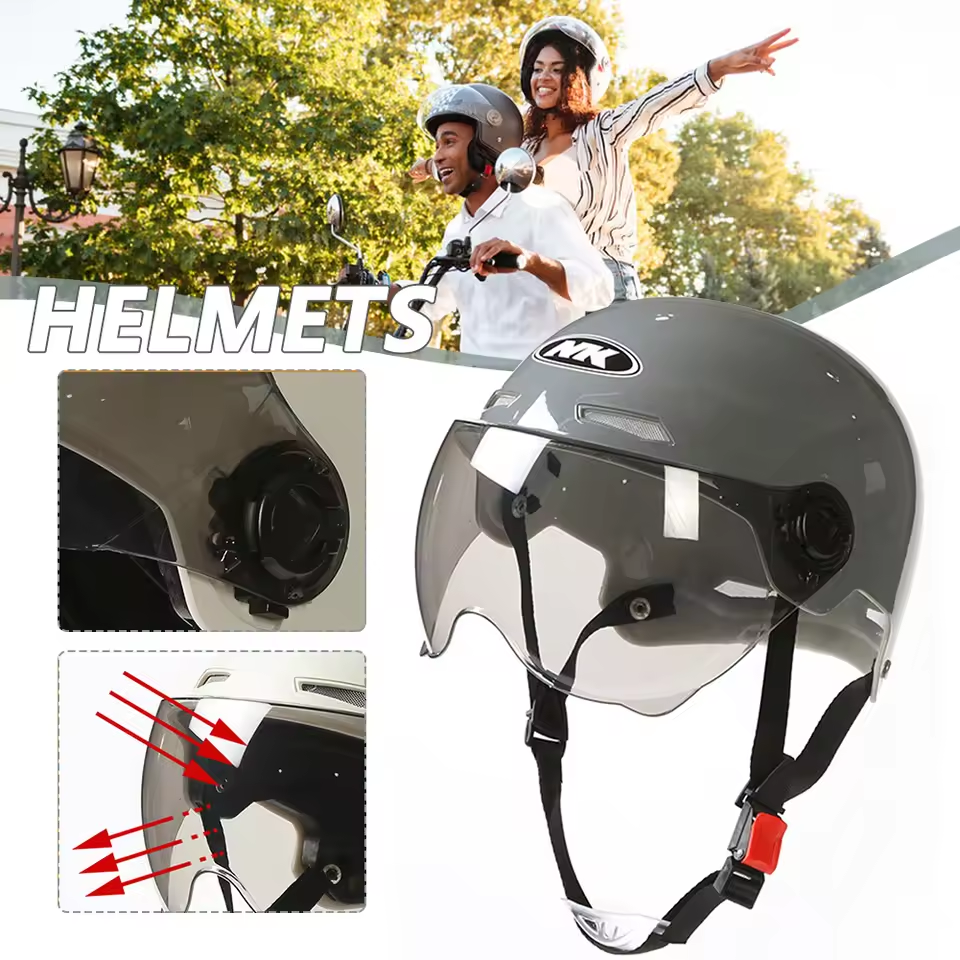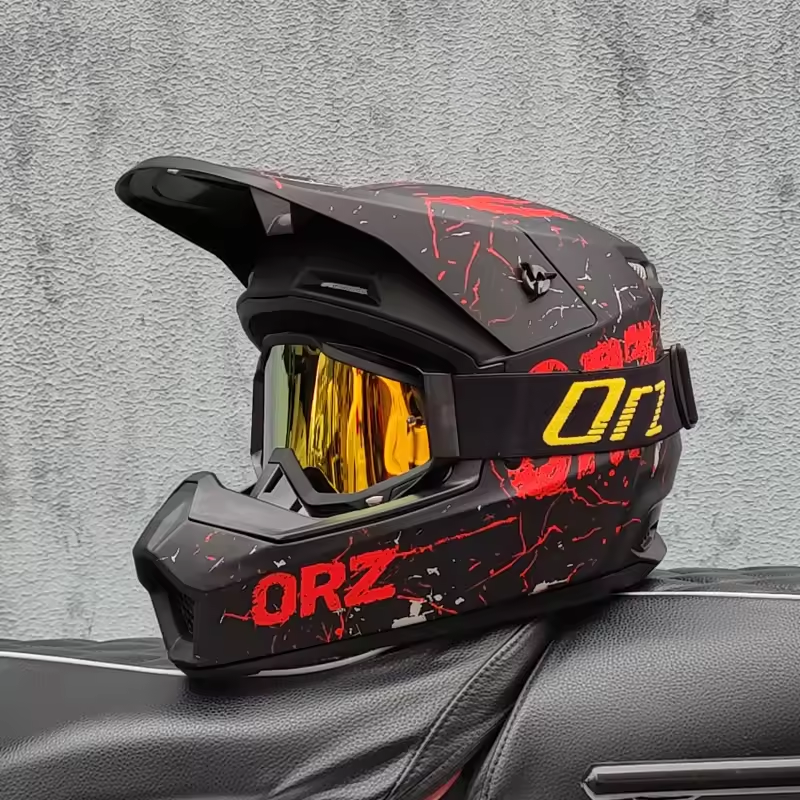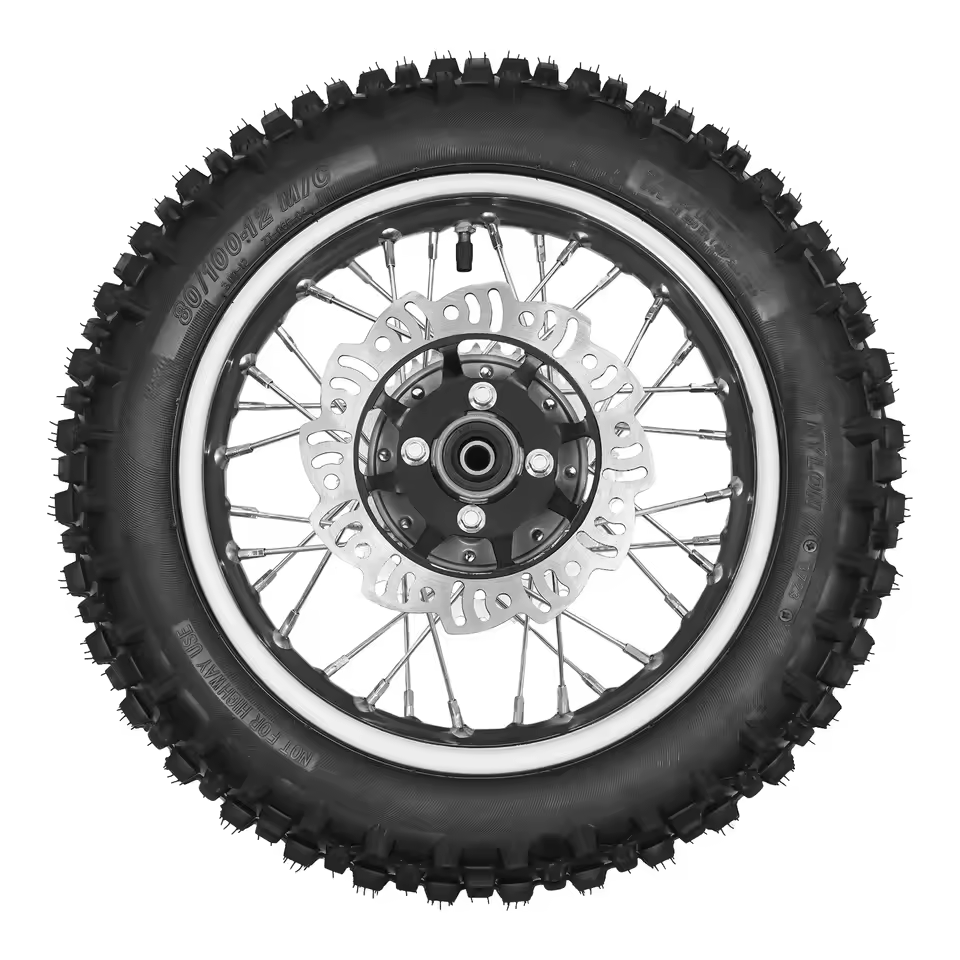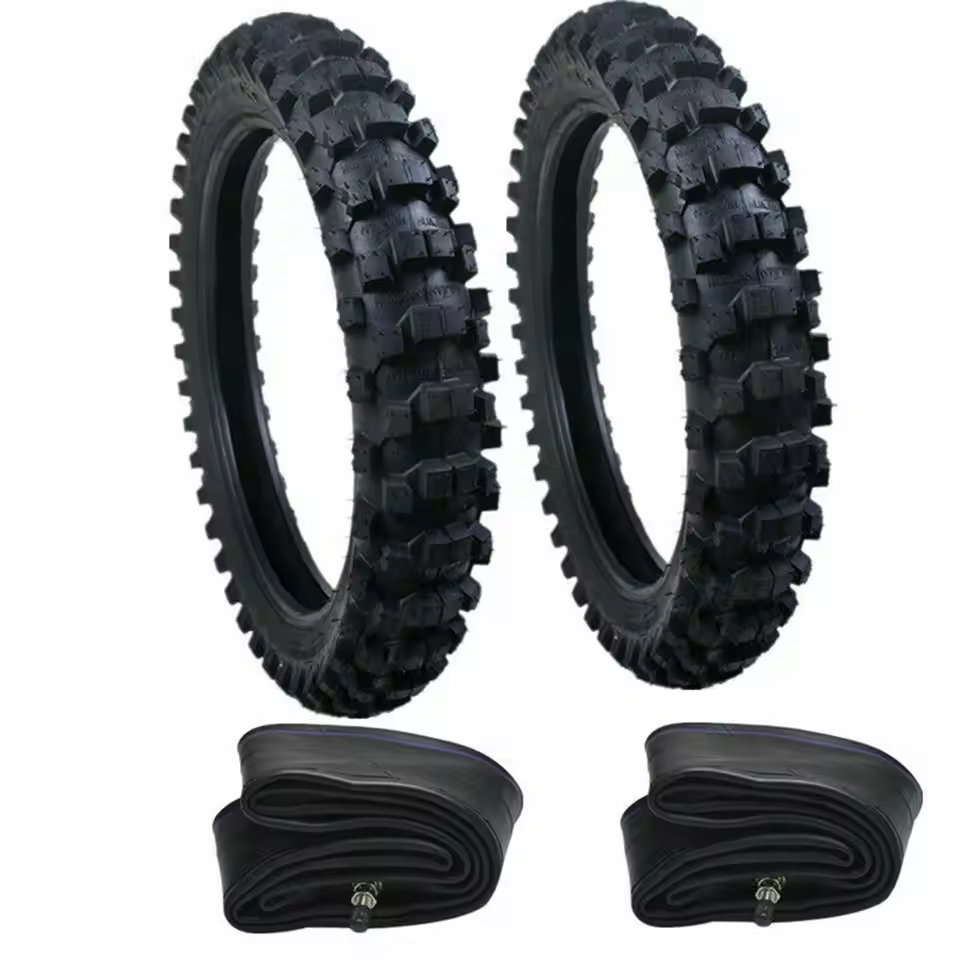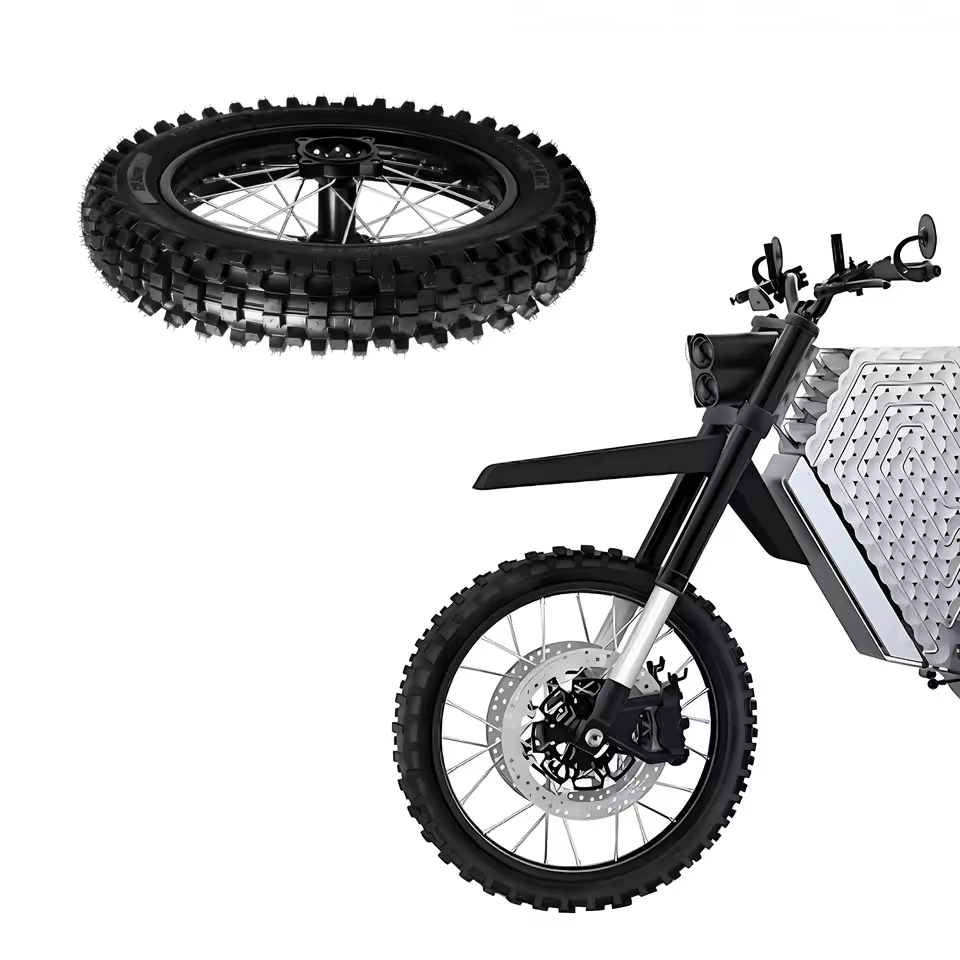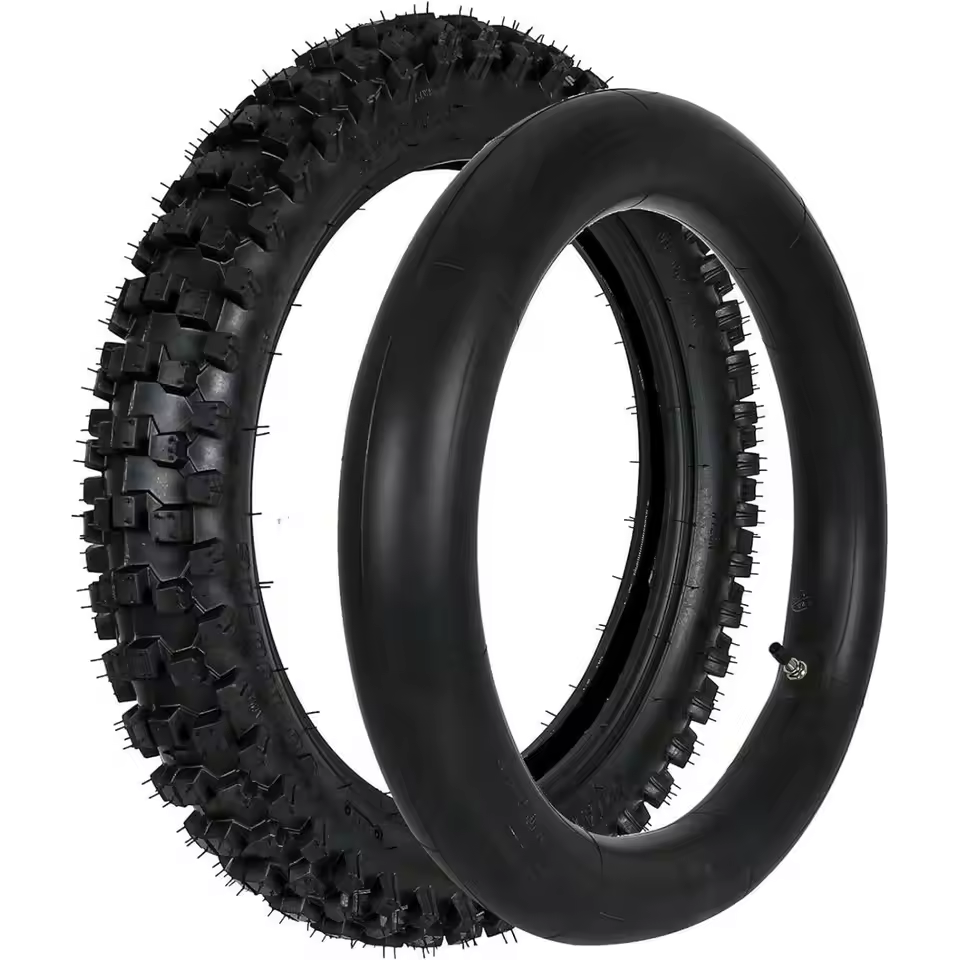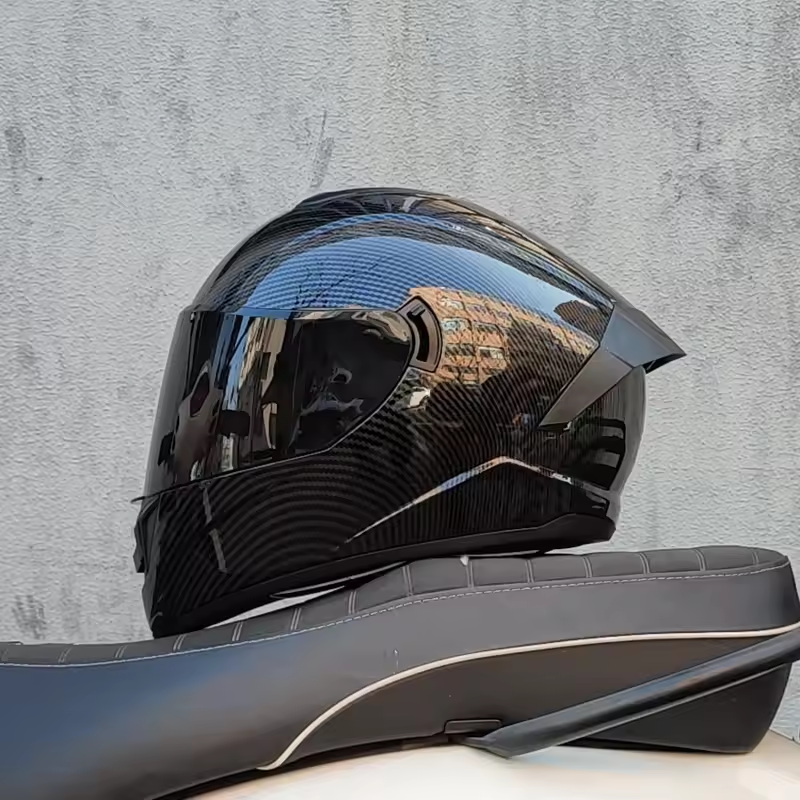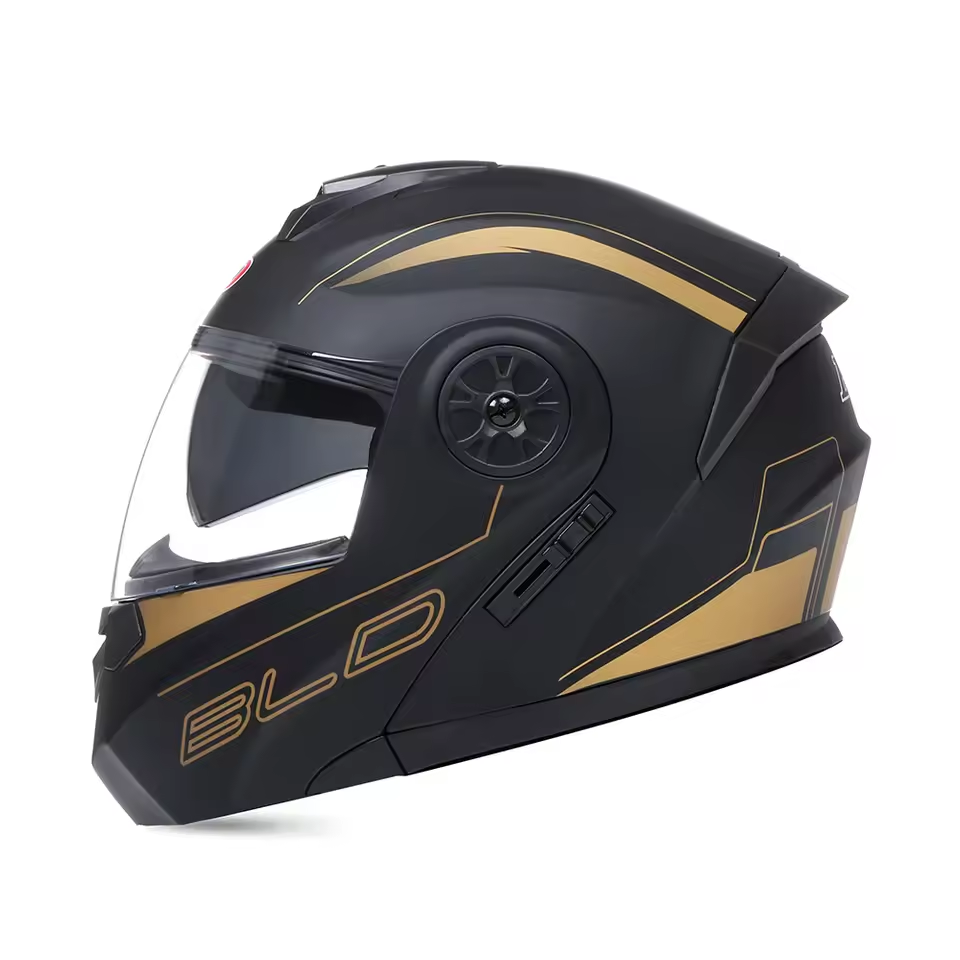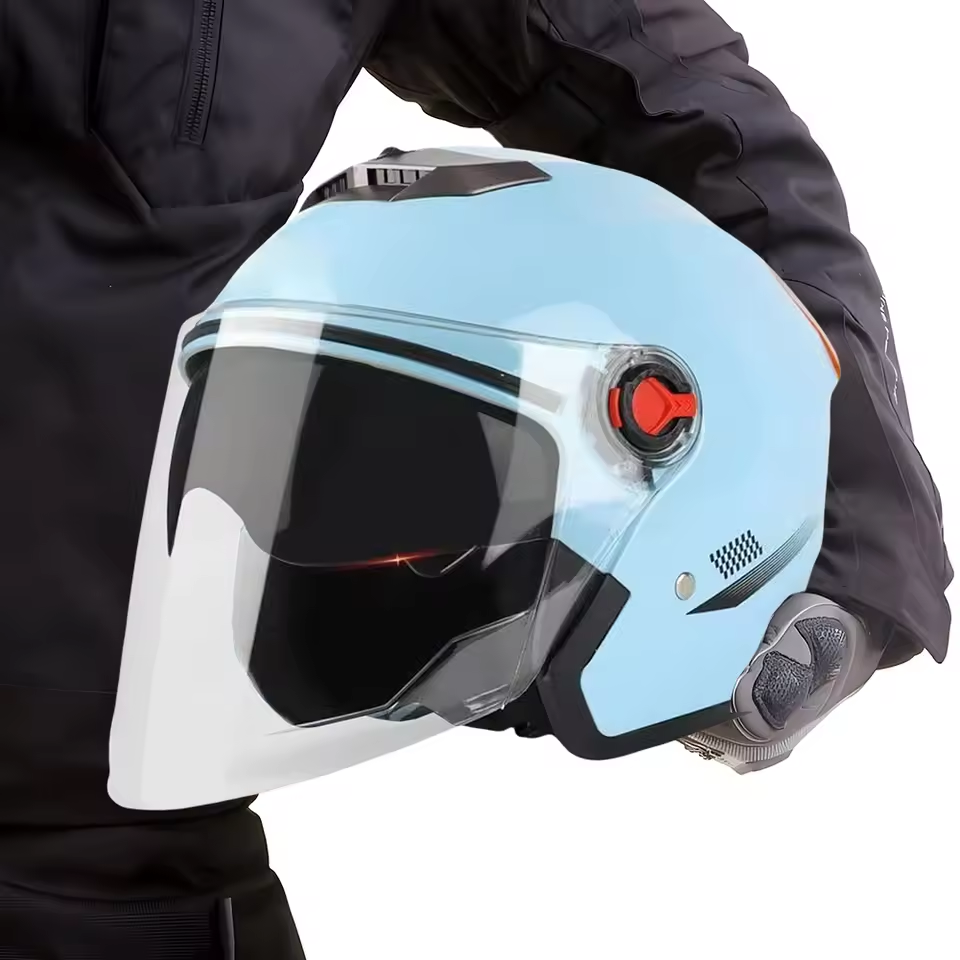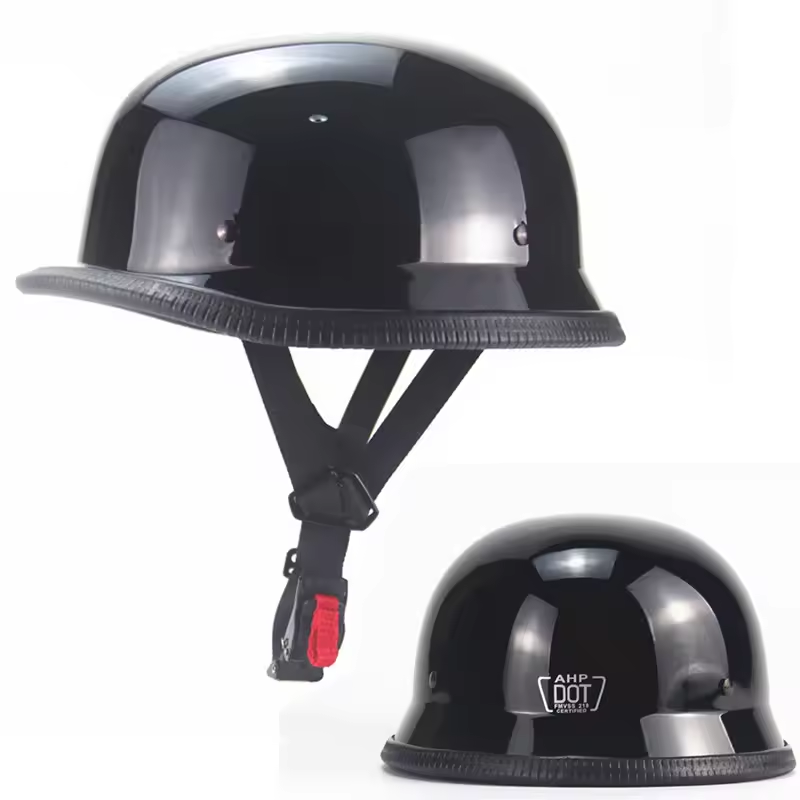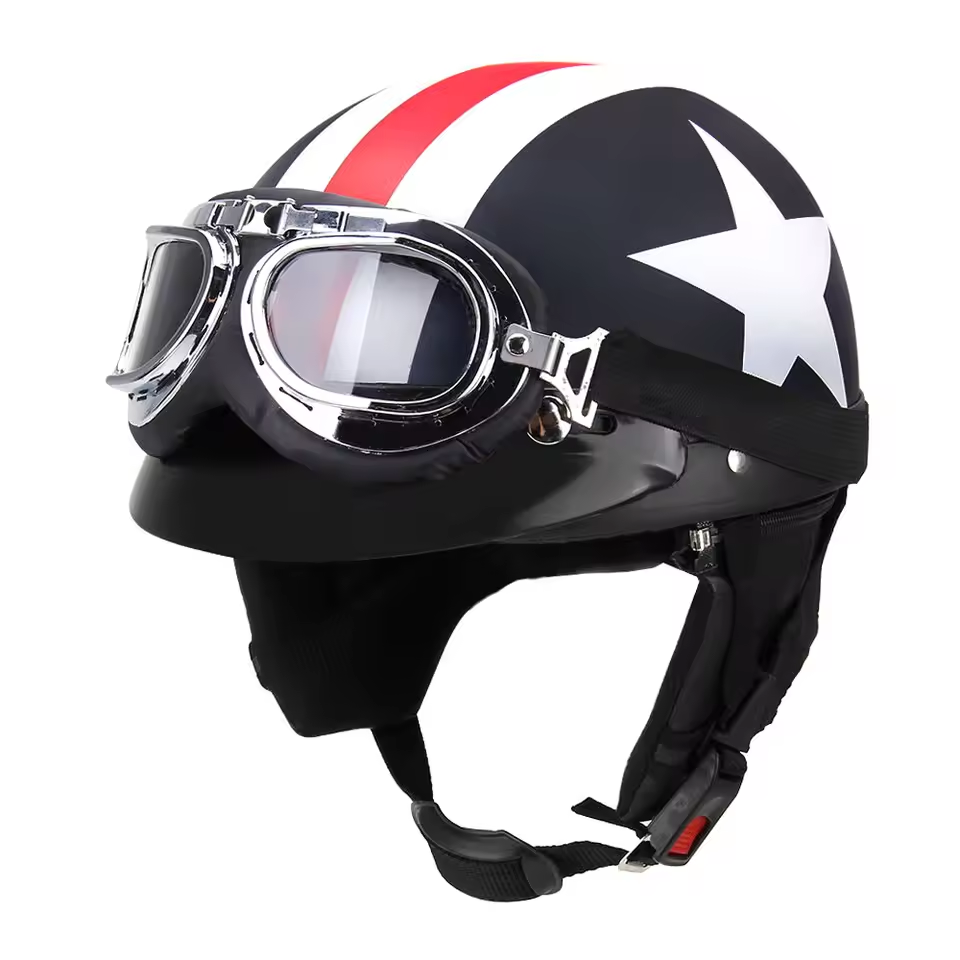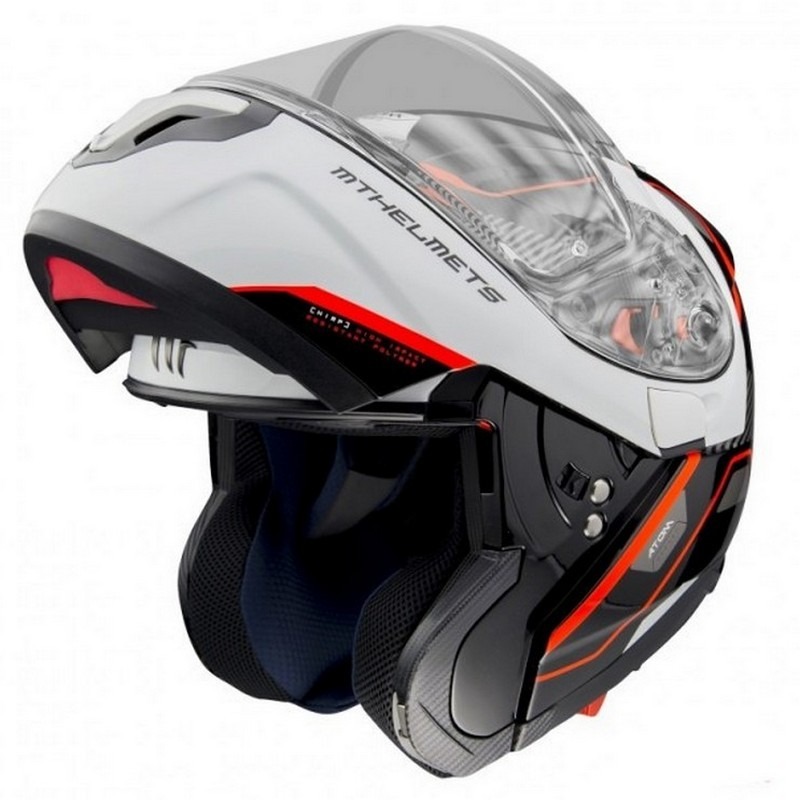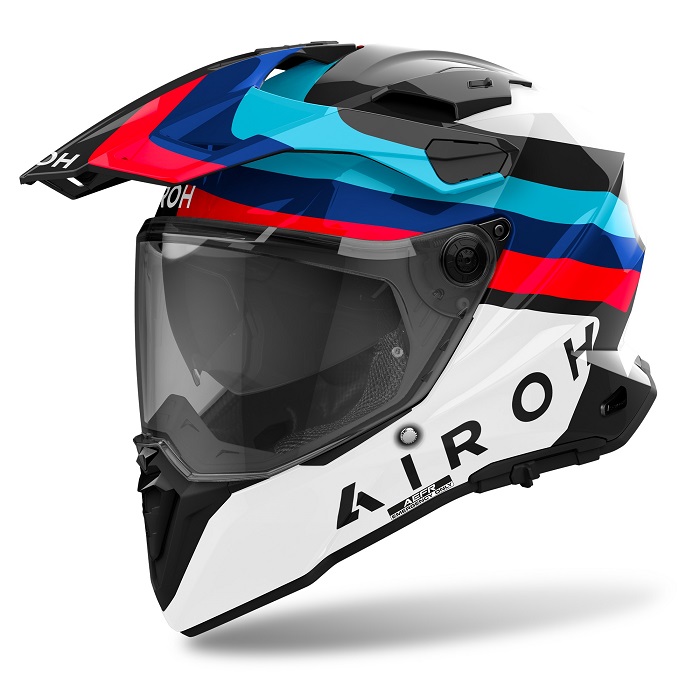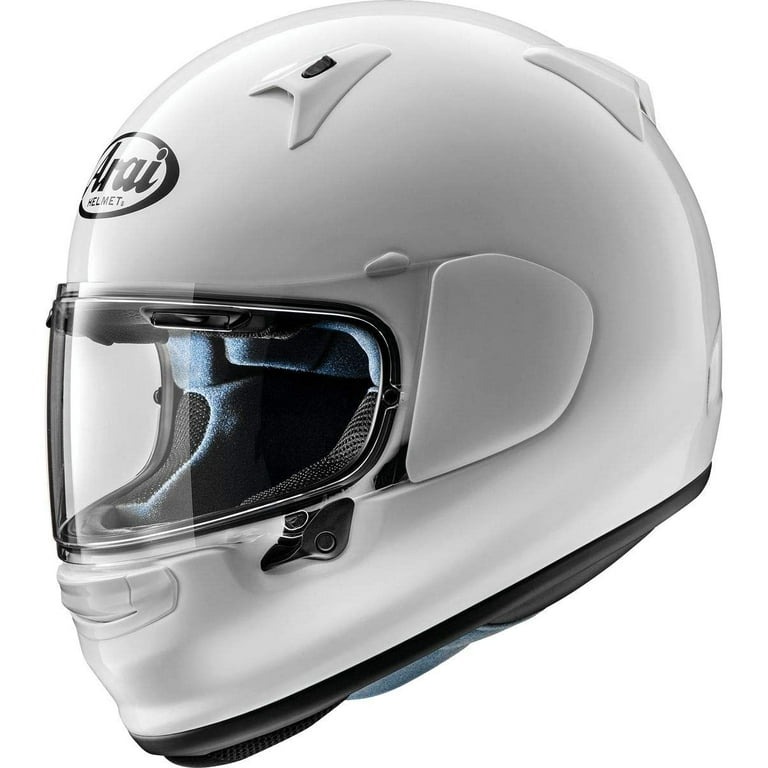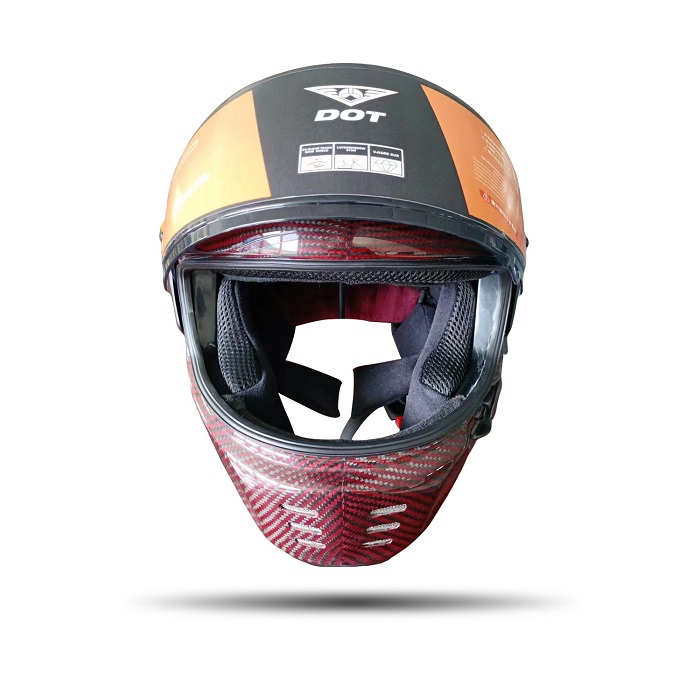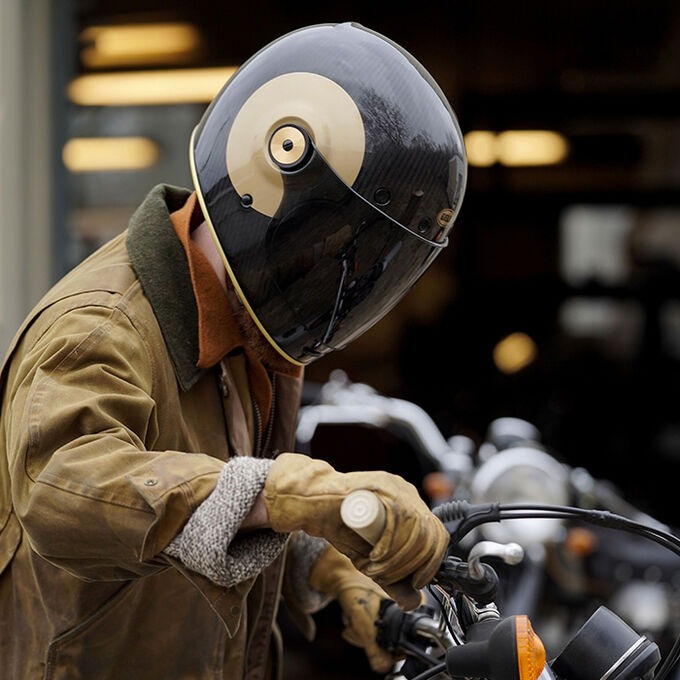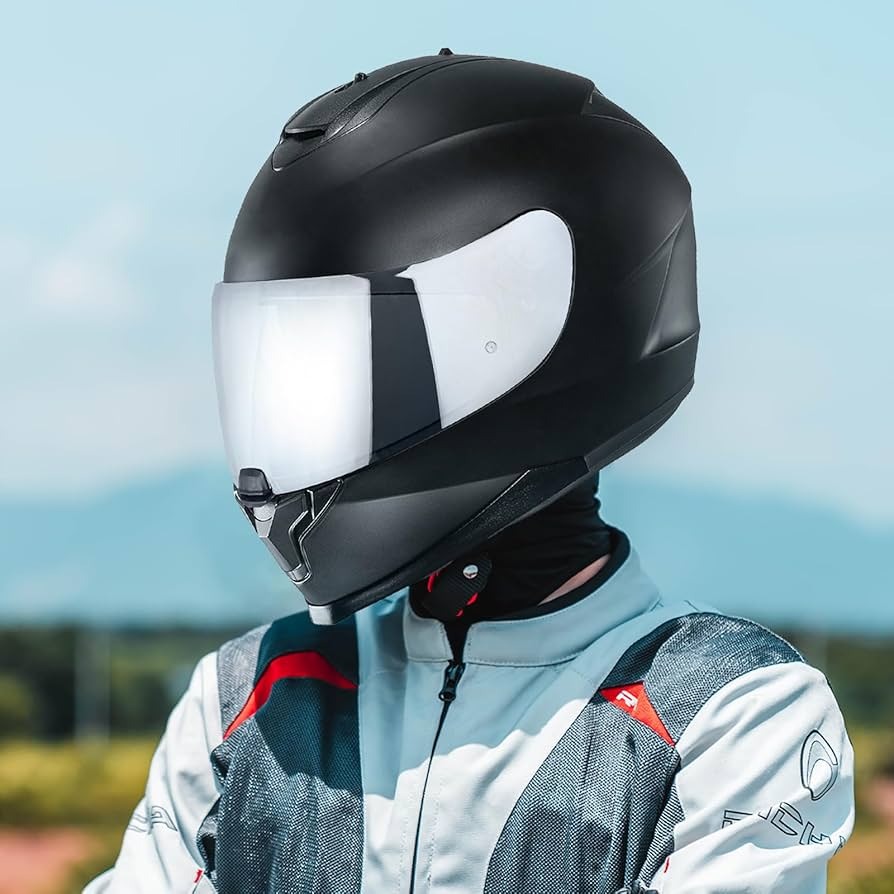May 30, 2025
Best Adventure Motorcycle Helmet for Protection and Comfort
Embarking on an adventure motorcycle journey requires not only courage and skill but also the right gear to ensure safety and comfort. Among the essential pieces of equipment, the best adventure motorcycle helmet plays a pivotal role in protecting riders from potential hazards while enhancing their riding experience. This comprehensive guide explores everything you need to know about choosing the best adventure motorcycle helmet, ensuring you make an informed decision for your next adventure.
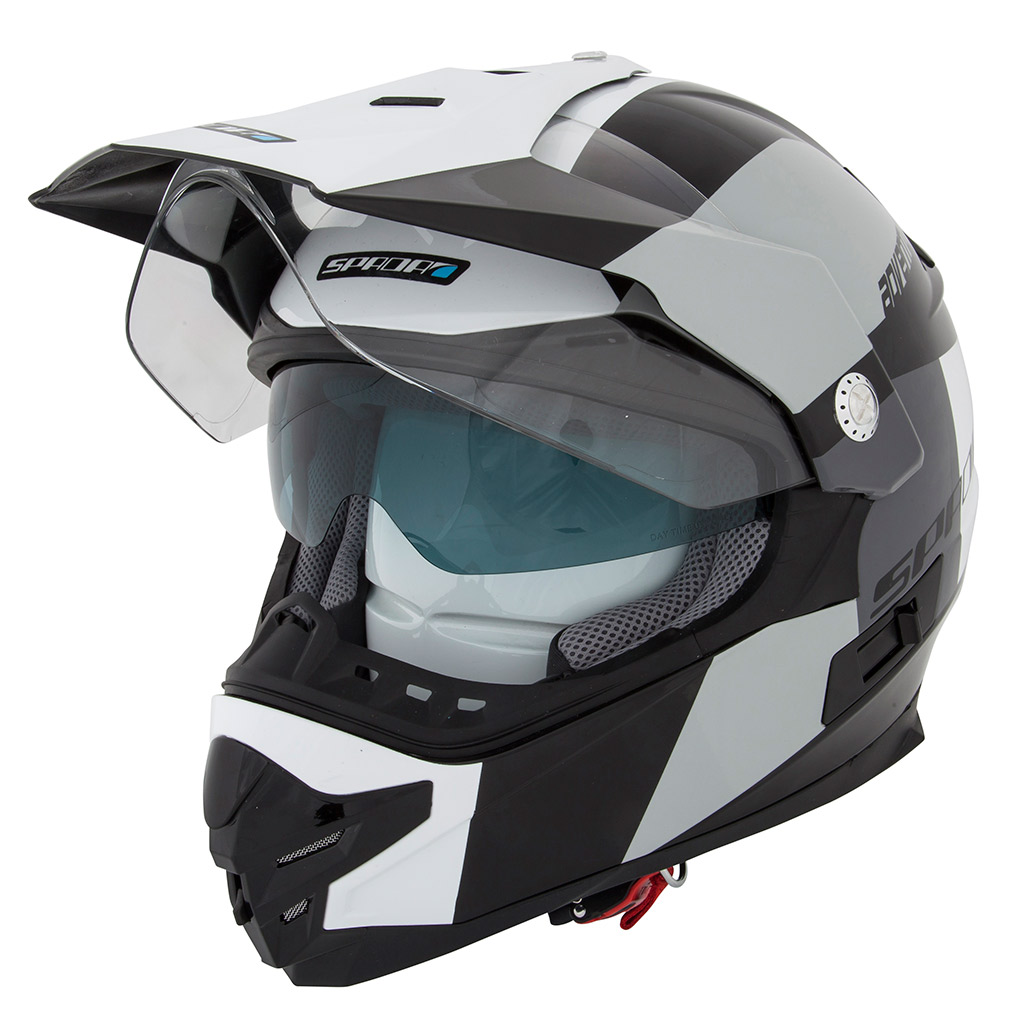 Why the Best Adventure Helmet Matters
Why the Best Adventure Helmet Matters
When setting out on long-distance rides or rugged terrains, the importance of a high-quality helmet cannot be overstated. The best adventure motorcycle helmet offers superior protection, comfort, and functionality, making it a crucial investment for any serious rider.
Superior Protection for Every Ride
Safety is the foremost reason to prioritize the best adventure motorcycle helmet. These helmets are designed to provide maximum protection against impacts, abrasions, and other potential injuries. Featuring advanced materials like carbon fiber and polycarbonate, the best adventure motorcycle helmets adhere to stringent safety standards, ensuring they can withstand the rigors of off-road and on-road riding alike.
Enhanced Comfort for Long Journeys
Adventure rides often span long distances, making comfort a key factor in helmet selection. The best adventure motorcycle helmets are equipped with superior ventilation systems, moisture-wicking liners, and ergonomic designs that minimize fatigue. By maintaining optimal airflow and reducing heat buildup, these helmets keep riders comfortable and focused throughout their journey.
Key Features of the Best Adventure Helmet
Understanding the essential features of the best adventure motorcycle helmet can help you make a well-informed choice. Here are the critical aspects to consider:
Advanced Ventilation Systems
Effective ventilation is crucial for maintaining comfort during extended rides. The best adventure motorcycle helmets come with multiple vents and air channels that facilitate airflow, preventing overheating and reducing moisture accumulation. This feature ensures that riders stay cool and dry, even in challenging weather conditions.
Lightweight and Durable Materials
A lightweight helmet enhances maneuverability and reduces neck strain, especially during long rides. The best adventure motorcycle helmets utilize materials like carbon fiber, fiberglass, and high-impact plastics, which offer a perfect balance between weight and durability. These materials not only provide excellent protection but also contribute to the helmet’s overall comfort.
Comprehensive Visor Options
The visor is a vital component of any motorcycle helmet, offering protection against wind, debris, and varying light conditions. The best adventure motorcycle helmets feature high-quality visors with anti-fog, anti-scratch, and UV-resistant coatings. Additionally, many models come with interchangeable visors or photochromic lenses that automatically adjust their tint based on the ambient light, ensuring clear visibility in all environments.
How to Choose the Best Adventure Helmet
Selecting the best adventure motorcycle helmet requires careful consideration of several factors. Here’s a step-by-step guide to help you make the right choice:
Determine Your Riding Style and Needs
Before choosing a helmet, assess your riding style and the types of adventures you embark on. Whether you frequently ride on highways, off-road trails, or a combination of both, your hairstyle should align with the helmet’s features. The best adventure motorcycle helmets cater to various riding styles, offering features tailored to specific needs, such as enhanced ventilation for hot climates or robust protection for off-road trails.
Prioritize Safety Certifications
Safety should never be compromised when choosing a helmet. Look for helmets that meet or exceed safety certifications like DOT (Department of Transportation), ECE (Economic Commission for Europe), or Snell standards. The best adventure motorcycle helmets display these certifications clearly, ensuring they provide the highest level of protection.
Test for Proper Fit and Comfort
A helmet must fit snugly without causing discomfort. Visit a local store to try on different models, paying close attention to the fit around your head, chin, and face. The best adventure motorcycle helmets offer customizable padding and adjustable straps, allowing you to achieve a secure and comfortable fit tailored to your unique head shape.
Consider Additional Features
Modern helmets come with a variety of additional features that enhance functionality and convenience. Consider options like integrated communication systems, removable and washable liners, sun visors, and built-in sunshades. The best adventure motorcycle helmets often incorporate these extras, providing a comprehensive solution for both safety and convenience.
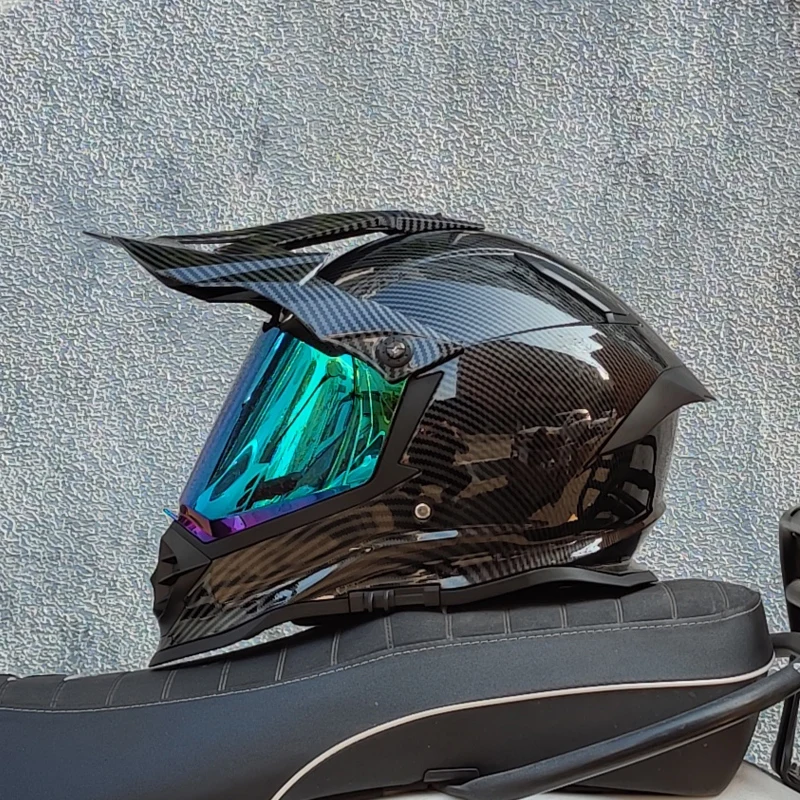 Top Brands Offering the Best Adventure Helmets
Top Brands Offering the Best Adventure Helmets
When searching for the best adventure motorcycle helmet, choosing a reputable brand can make a significant difference in quality and performance. Here are some top brands known for their exceptional helmets:
Shoei
Shoei is renowned for producing high-quality motorcycle helmets that prioritize safety, comfort, and style. Their adventure motorcycle helmets are equipped with advanced ventilation systems, lightweight materials, and superior visor technology, making them a top choice for riders seeking the best adventure motorcycle helmet.
Arai
Arai helmets are synonymous with exceptional craftsmanship and safety standards. The brand’s adventure motorcycle helmets feature robust construction, excellent ventilation, and customizable fit systems, ensuring that riders receive the best protection and comfort on every journey.
AGV
AGV offers a wide range of adventure motorcycle helmets known for their innovative designs and superior performance. Their helmets often incorporate aerodynamic features, advanced materials, and high-grade visors, making them a popular choice for adventure enthusiasts.
Bell
Bell helmets are celebrated for their durability and cutting-edge technology. The brand’s adventure motorcycle helmets provide excellent protection, enhanced ventilation, and versatile features that cater to the needs of both on-road and off-road riders.
Comparing the Best Adventure Helmets
To identify the best adventure motorcycle helmet, it’s essential to compare different models based on key criteria. Here’s a comparison of some top helmets in the market:
Shoei Hornet ADV
The Shoei Hornet ADV stands out for its lightweight construction and exceptional ventilation. Featuring a modular chin bar, this helmet offers versatility for both open-face and full-face riding. Its advanced visor system with anti-fog and anti-scratch coatings ensures clear visibility, making it an excellent choice for long-distance and mixed-terrain rides.
Arai XD4
The Arai XD4 is a premium adventure helmet that combines robust protection with supreme comfort. Its multi-layer construction provides superior impact resistance, while the integrated sun shield and removable liner enhance usability. The Arai XD4 is perfect for riders who prioritize safety and comfort on extended adventures.
AGV K6
The AGV K6 offers a perfect blend of style and functionality. With its aerodynamic design and high-definition visor, this helmet provides excellent protection and clear visibility. The AGV K6’s lightweight construction and advanced ventilation system make it a top contender among the best adventure motorcycle helmets.
Bell SRT Modular
The Bell SRT Modular is a versatile helmet that caters to both on-road and off-road adventures. Its modular design allows for easy transitions between full-face and open-face riding, while the energy-absorbing liner ensures maximum protection. The Bell SRT Modular is an ideal choice for riders seeking flexibility and safety in one package.
Maintaining Your Best Adventure Helmet
Proper maintenance is crucial to ensure your helmet remains in optimal condition and continues to provide the best protection. Here are some maintenance tips for the best adventure motorcycle helmet:
Regular Cleaning
Clean your helmet regularly to remove dirt, dust, and sweat. Use mild soap and warm water for the exterior and a gentle cleanser for the interior padding. Avoid using harsh chemicals or abrasive materials that can damage the helmet’s surface and components.
Inspect for Damage
Frequent inspections can help identify any signs of wear and tear, such as cracks, dents, or loose parts. If you notice any damage, consult a professional or consider replacing the helmet to maintain maximum safety.
Proper Storage
Store your helmet in a cool, dry place away from direct sunlight and extreme temperatures. Using a helmet bag or case can protect it from dust and physical damage, ensuring it remains in good condition for years to come.
Replace When Necessary
Even the best adventure motorcycle helmets have a lifespan. It’s generally recommended to replace your helmet every five years or immediately after a significant impact. Regularly assess the condition of your helmet to ensure it continues to provide the highest level of protection.
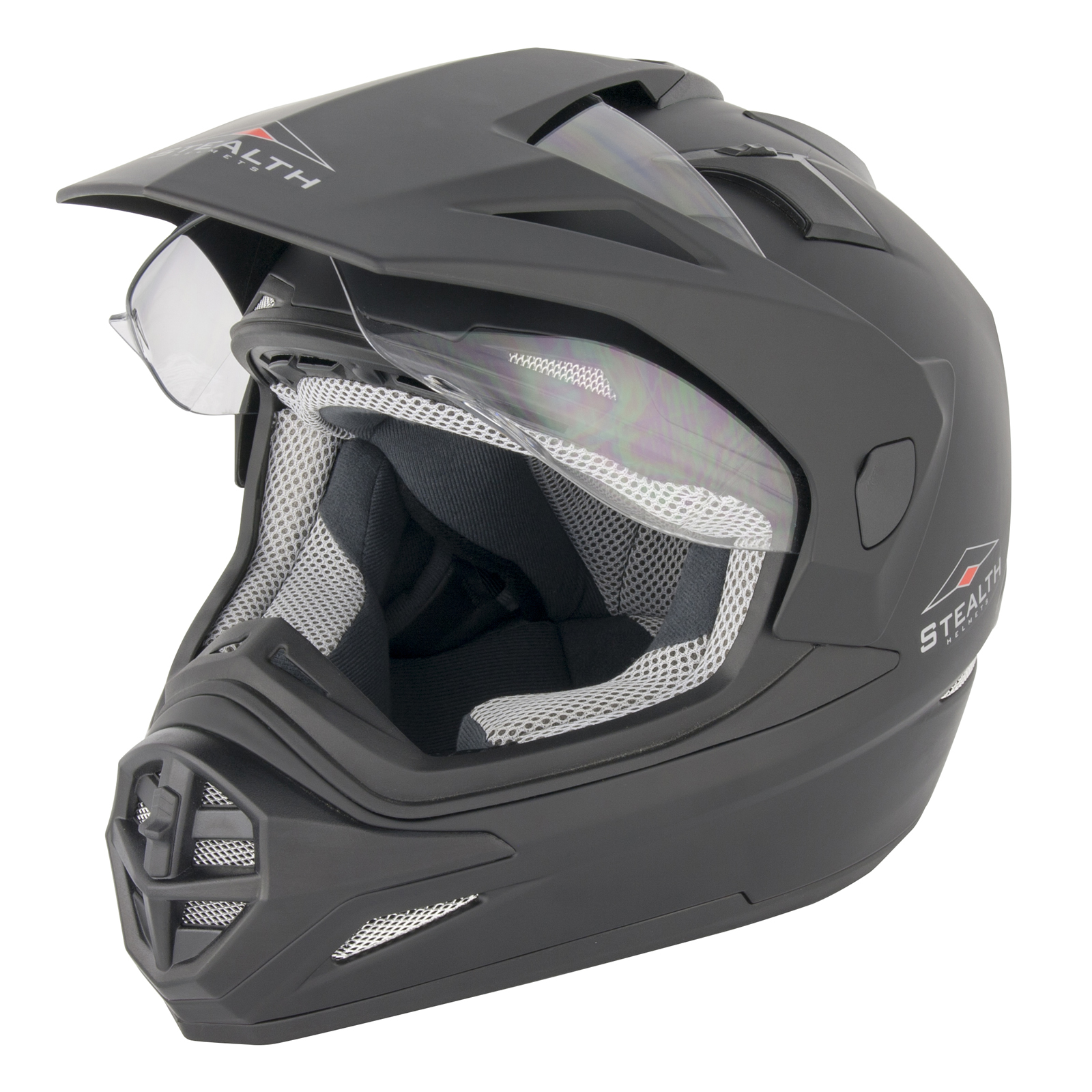 Additional Accessories for the Best Adventure Helmet
Additional Accessories for the Best Adventure Helmet
Enhancing your helmet with the right accessories can improve both functionality and comfort. Here are some accessories to consider for the best adventure motorcycle helmet:
Visor Accessories
Invest in high-quality visor accessories such as anti-fog sprays, UV protection films, and interchangeable visors. These additions can enhance visibility and adapt to varying light conditions, ensuring you maintain clear vision throughout your ride.
Communication Systems
Integrated communication systems allow you to stay connected with fellow riders, listen to music, or receive navigation instructions without taking your hands off the handlebars. Adding a Bluetooth communication system to your helmet can significantly enhance your riding experience.
Helmet Liners and Pads
Additional helmet liners and pads can provide extra cushioning and improve the fit of your helmet. Choose liners made from moisture-wicking and antimicrobial materials to keep you comfortable and reduce odor during long rides.
Face Shields and Goggle Attachments
For riders who prefer extra protection or different styles, face shields and goggle attachments can be valuable additions. These accessories protect your face from dust, debris, and wind, offering an extra layer of safety during your adventures.
The Importance of Proper Fit in the Best Adventure Helmet
A proper fit is fundamental to the effectiveness of the best adventure motorcycle helmet. An ill-fitting helmet can compromise safety, comfort, and overall performance. Here’s why fit matters and how to achieve it:
Ensuring Maximum Protection
A helmet that fits correctly ensures that it stays securely in place during a crash, providing maximum protection to your head. Proper fit prevents the helmet from moving around, reducing the risk of injury and enhancing its protective capabilities.
Enhancing Comfort for Extended Rides
Comfort is crucial for enjoyment during long rides. A well-fitted helmet minimizes pressure points and distributes weight evenly across your head, reducing fatigue and discomfort. Ensuring the right fit allows you to focus on the road ahead without unnecessary distractions.
Preventing Distractions
A helmet that fits snugly
Preventing Distractions
A helmet that fits snugly yet comfortably helps prevent unnecessary distractions. When the helmet stays in place without shifting or causing pressure, you can maintain better focus on your riding, resulting in a safer and more enjoyable journey.
Tips for Trying on the Best Adventure Helmet
Trying on a helmet before purchasing is essential to ensure the best fit and comfort. Here are some tips to help you choose the best adventure motorcycle helmet:
Measure Your Head
Before heading to a store, measure the circumference of your head using a soft tape measure. Take measurements just above the eyebrows and around the widest part of your head. Comparing this measurement to the helmet’s sizing chart will help you narrow down the best fits.
Try Multiple Sizes and Models
Don’t settle for the first helmet you try. Experiment with different sizes and models to find the one that best fits your head shape and size. Remember that each brand may have slightly different sizing, so trying multiple options increases the chances of finding the perfect fit.
Check the Fit Zones
Examine how the helmet fits in key zones: front, sides, and back of your head. A good helmet should feel snug in these areas without causing any discomfort. Ensure that the cheek pads sit comfortably against your face and that the back of the helmet supports the lower part of your head without being too tight.
Move Your Head Around
While trying on a helmet, move your head side to side and nod up and down. The helmet should stay in place without shifting or causing any pressure points. Make sure the visor moves smoothly without restriction and that the overall fit remains consistent during these movements.
Consider the Chinstrap
Check the chinstrap to ensure it fits securely. The best adventure motorcycle helmets have chinstraps that are easy to adjust and comfortable to wear. Fasten the chinstrap and give it a gentle tug to confirm it holds the helmet firmly in place without being overly tight.
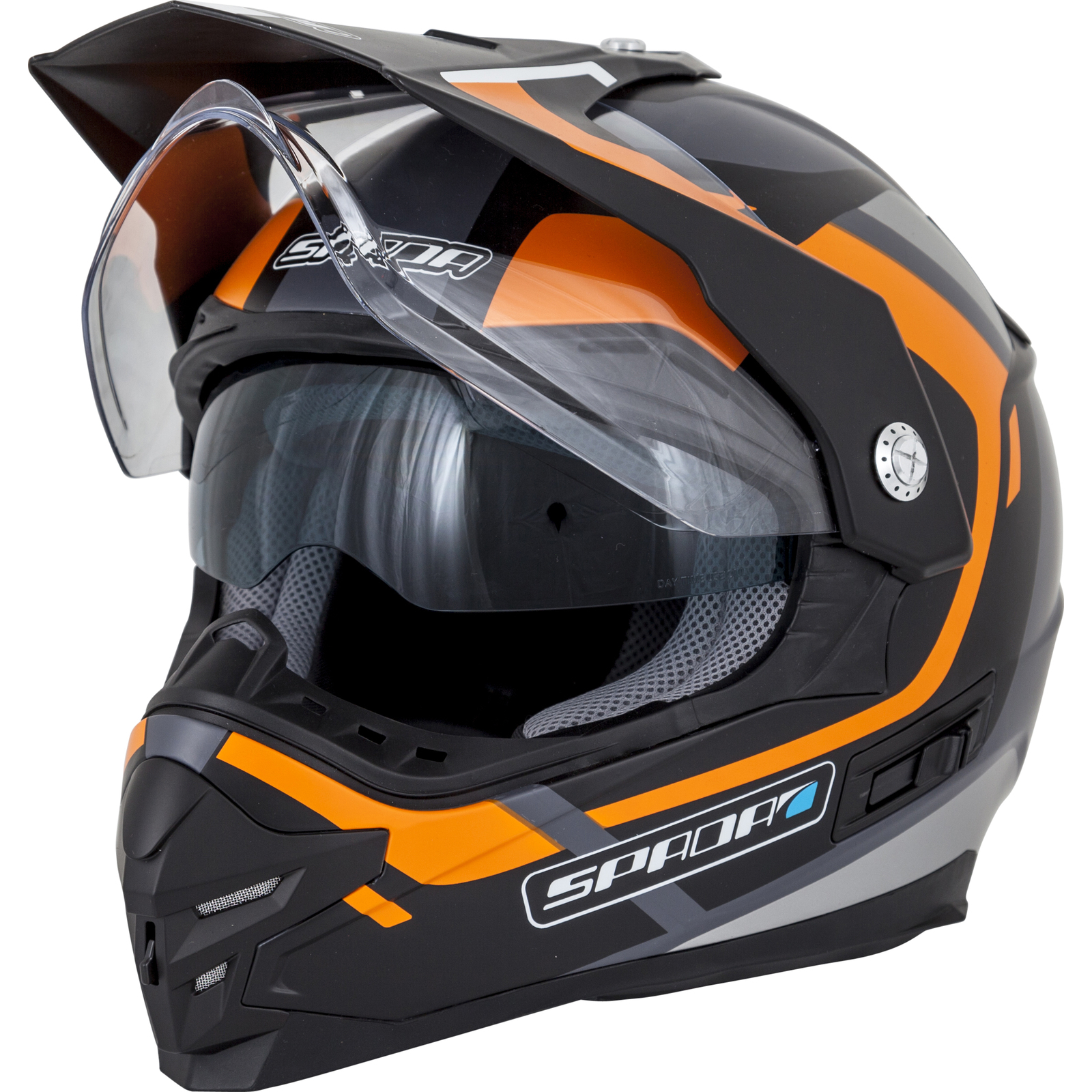 Common Mistakes to Avoid When Choosing the Best Adventure Helmet
Common Mistakes to Avoid When Choosing the Best Adventure Helmet
To ensure you select the best adventure motorcycle helmet, steer clear of these common mistakes:
Ignoring Safety Ratings
One of the biggest mistakes riders make is overlooking safety ratings. Always prioritize helmets that meet or exceed recognized safety standards, such as DOT, ECE, or Snell certifications. Ignoring these ratings can compromise your safety on the road.
Choosing Style Over Safety
While aesthetics are important, safety should never be sacrificed for style. Ensure that the helmet you choose not only looks good but also provides the necessary protection and meets safety standards. The best adventure motorcycle helmets balance both style and safety effectively.
Not Considering Ventilation
Ventilation is crucial for comfort, especially during long rides. Avoid helmets with inadequate ventilation systems, as they can lead to overheating and discomfort. The best adventure motorcycle helmets come with advanced ventilation features that keep you cool and dry under various riding conditions.
Overlooking the Importance of Fit
A helmet that doesn’t fit properly can be ineffective in providing protection and comfortable during rides. Avoid buying a helmet that is too tight or too loose. Make sure the helmet fits snugly and securely, adhering to your head’s unique shape.
Skipping the Try-On Process
Purchasing a helmet without trying it on first is a common mistake that can lead to discomfort and poor protection. Always take the time to try on multiple helmets to find the one that fits your head perfectly and feels comfortable during your rides.
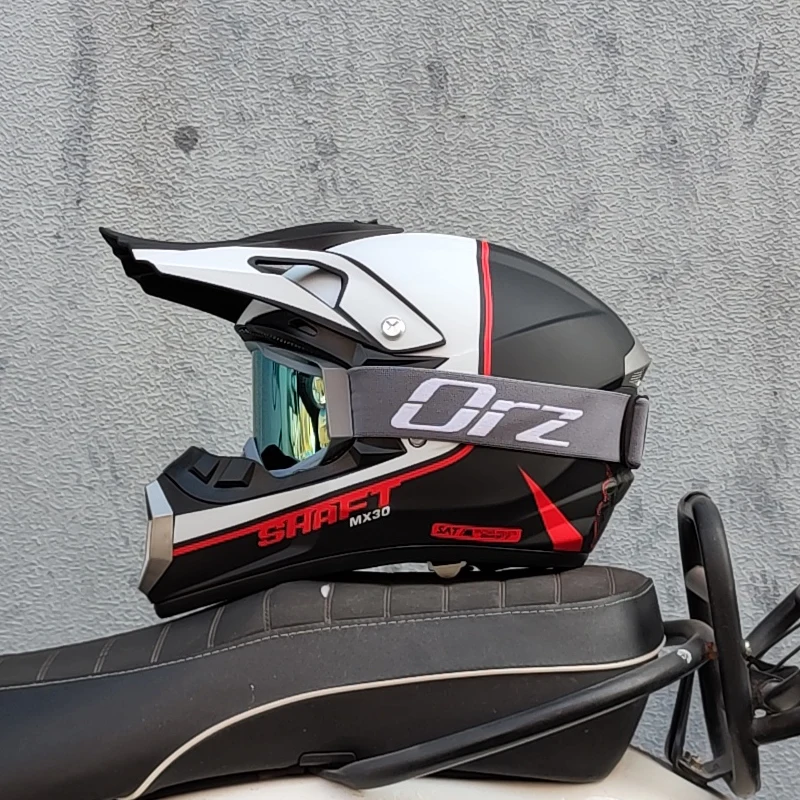 The Future of the Best Adventure Helmet
The Future of the Best Adventure Helmet
As technology and design continue to evolve, the best adventure motorcycle helmets are becoming even more advanced. Here are some upcoming trends that will shape the future of motorcycle helmets:
Smart Helmet Technology
Smart helmets are integrating technology to enhance rider safety and convenience. Features like built-in GPS, Bluetooth connectivity, and heads-up displays are becoming more common. These innovations allow riders to access navigation, communicate with fellow riders, and receive real-time updates without taking their eyes off the road.
Enhanced Aerodynamics
Future helmet designs will focus on improving aerodynamics to reduce wind resistance and noise, providing a smoother and quieter ride. Sleeker designs and advanced materials will contribute to better performance, especially at high speeds and during long-distance adventures.
Advanced Materials for Increased Protection
The development of new materials will lead to helmets that offer even greater protection while being lighter and more comfortable. Materials like graphene and advanced composites will provide superior impact resistance and durability, ensuring riders are better protected against accidents and collisions.
Customizable Features
Customization will play a significant role in the future of motorcycle helmets. Riders will have the option to personalize their helmets with interchangeable liners, adjustable ventilation systems, and customizable color schemes. This personalization ensures that each rider can achieve the perfect fit and style to suit their individual preferences.
Conclusion
Selecting the best adventure motorcycle helmet is a crucial step in preparing for a safe and enjoyable ride. By considering factors such as safety certifications, fit, ventilation, and additional features, you can find a helmet that meets your specific needs and enhances your riding experience. Investing in a high-quality helmet not only ensures your safety but also provides the comfort and functionality needed for long and adventurous journeys. Embrace the advancements in helmet technology and design, and choose the best adventure motorcycle helmet that will accompany you on countless thrilling rides ahead.
